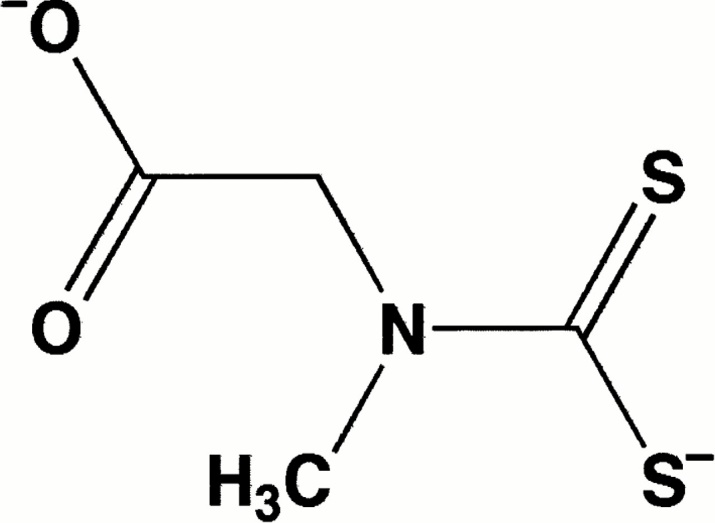
Support Your Heart, Sex Life and Overall Health with Nitric-Pro™
November 27th, 2017Protecting against cardiovascular disease and enhancing one’s sex life are two health-related goals high on almost everyone’s list. An overall strategy to reaching these goals, while supporting health in general, includes promoting optimal levels of an endogenously produced molecule crucial to our physiology; deficiencies have been linked to high blood pressure, angina, heart attack, erectile dysfunction (ED), diabetes, even aging. This structurally simple, though multifaceted molecule, is nitric oxide, a potent vasodilator that plays a range of key roles in the body, including regulating blood flow and blood pressure, reducing cardiovascular risk factors, mediating immune defense and stem cell release, enhancing sexual function, and even reducing waist size. Fortunately, research shows that it’s possible to boost circulating levels of this essential substance by supplementing with an amino acid precursor, the major ingredient of a cutting-edge dietary supplement called Nitric-Pro.
Nitric Oxide is a Potent Vasodilator Crucial to Vascular Function
Nitric oxide is, by chemical definition, a free radical that exerts multiple physiological effects for seconds before undergoing degradation in the bloodstream. It functions as a cellular signaling molecule; i.e., it transmits information between cells to elicit a physiologic response, and it’s one of the few gaseous signaling molecules known. Because of its biological significance, nitric oxide has been extensively studied, yielding over 100,000 scientific papers in the fields of chemistry, molecular biology, gene therapy, and physiology.

Figure 1: The chemical molecule of Nitric-Oxide.
Nitric oxide plays a major role as the body’s most powerful vasodilator, signaling blood vessels to relax and expand when necessary to facilitate blood flow and maintain normal blood pressure. More than just tubes transporting blood, arteries are active, dynamic muscular structures that must expand and contract to support the body’s changing needs. For example, arteries that supply the heart can enlarge in diameter up to 50 percent during exercise in the presence of an adequate nitric oxide supply. The manufacturing site of nitric oxide is the endothelium, a thin layer of cells that line the interior of blood vessels. Before its chemical structure was identified, the substance we now know as nitric oxide was originally named “endothelium-derived relaxing factor,” denoting its role in regulating blood vessel elasticity.

Figure 2: Nitric oxide dilates blood vessels.
Since Nitric oxide has a transient half-life, a continual supply is required; any disruption or impairment in the manufacture of nitric oxide can lead to endothelial dysfunction, the inability of arteries and blood vessels to dilate in response to the body’s need for increased blood flow. This can precipitate a cascade of events including inflammation, clotting, plaque formation, constricted blood vessels, and the development of diseases such as cardiovascular disease (including angina, heart attack, atherosclerosis and stroke), diabetes, and ED. In fact, endothelial dysfunction is the common mechanism that leads to both ED and heart disease; men with one condition will often exhibit the other, and both are due to impairment in nitric oxide production that lowers the capacity to dilate arteries and ensure blood flow to vital parts of the body. A major reason for this impairment is a deficit of a precursor for nitric oxide synthesis, as we’ll see next.
[Note: in this discussion, “ED” is used as the abbreviation for erectile dysfunction, not to be confused with endothelial dysfunction.]
Amino Acid L-arginine, a Crucial Precursor for Nitric Oxide Synthesis
Drugs such as nitroglycerine, used to treat angina and Viagra®, prescribed for ED, act on the nitric oxide pathway, but they do not actually undo the underlying snag in the metabolic pathway that manufactures nitric oxide. An alternate approach that corrects the root problem in endothelial dysfunction and resulting ED, heart disease and other disorders, is to restore nitric oxide bioavailability by supplementation with the amino acid L-arginine, the primary ingredient in Nitric-Pro, and the physiological starting material for nitric oxide synthesis. In the body, endothelial cells release enzymes that catalyze the manufacture of nitric oxide from L-arginine and oxygen. As mentioned, this metabolic pathway relies on adequate stores of L-arginine; deficiencies set the stage for alterations in blood vessels and resulting disorders. L-arginine has been found to be a safe and effective first-line therapy for many health conditions, particularly vascular diseases, as shown in several clinical studies which we’ll now examine.

Figure 3: Nitric oxide synthesis.
Clinical Studies on L-arginine: Treating ED and Improving Cardiovascular Risk Factors
A 2017 study proved that men with arteriogenic ED (ED resulting from the inability of arteries and blood vessels to dilate) had significantly lower levels of serum L-arginine and l-citrulline, (an amino acid also contained in Nitric-Pro) than controls or patients whose ED resulted from another cause. The authors concluded that low serum levels of these amino acids reduced circulating concentrations of nitric oxide and increased ED risk. (1) An earlier double-blind placebo-controlled study evaluated the effect of “high-dose” L-arginine supplementation (5 g/day − the approximate L-arginine dose in Nitric-Pro) for 6 weeks in 50 men with ED. After 6 weeks, one third of the men in the treatment group reported significant improvements in their sexual function which corresponded to a doubling of levels of urinary nitric oxide metabolites, (resulting from increased nitric oxide production). These results indicate that L-arginine is effective in certain cases of ED, namely those that result from decreased nitric oxide synthesis (i.e., arteriogenic ED). (2) (ED can stem from a variety of causes besides vascular problems, which is why more men in this study did not experience an improvement in symptoms, even though L-arginine supplementation likely enhanced their overall health.) In addition to alleviating symptoms of ED in men, raising nitric oxide levels may enhance sexual function in women too, as shown in a study in which 108 women, aged 22-73, who reported a lack of sexual interest, received a supplement containing L-arginine and other ingredients, or placebo. After 4 weeks, women receiving the supplement reported improvements in different aspects of sexual health. (3)
Positive outcomes in patients with multiple cardiovascular risk factors have also been obtained using L-arginine as primary therapy. In one trial, 6 months of L-arginine treatment led to improvements in arterial flexibility (as measured by a test known as the “large artery elasticity index”) and a reduction in systolic blood pressure, leading researchers to conclude that “long-term L-arginine supplementation has beneficial vascular effects in pathologic disease states associated with endothelial dysfunction.” (4) A couple of studies looked at L-arginine and its effect on cardiovascular risk factors in obese patients. (Obesity is a risk factor for fatal heart attacks and heart disease, as well as other conditions such as diabetes.) In one trial, 90 obese patients received either L-arginine (3 or 6 g, 3 times daily) or placebo for 8 weeks. After 8 weeks, the treatment group showed significant decreases in not just blood pressure, but also fasting blood sugar, glycated hemoglobin (HbA1c), LDL cholesterol, triglycerides and total cholesterol, with a significant increase in HDL (“good”) cholesterol. And, as if these results weren’t impressive enough, the patients also lost weight and inches, as evidenced by decreases in body mass index and waist circumference − a remarkable outcome! (5) This weight-reducing potential of L-arginine was confirmed in another trial on women with central (abdominal) obesity administered L-arginine at 5 g/day, combined with selenium and a low calorie diet (6). These studies establish L-arginine as a novel and effective treatment for weight loss and lowering cardiovascular risk factors (blood pressure, blood sugar, HbA1c, and cholesterol) in obese patients, and potentially in diabetics and patients with metabolic syndrome. (Metabolic syndrome is characterized by a group of risk factors including high blood pressure, high blood sugar, unhealthy cholesterol levels, and abdominal fat. The syndrome is increasingly common and raises the risk of heart disease and diabetes.)
Amazingly, L-arginine supplementation can reduce certain cardiovascular risk factors even in young healthy adults. In a double-blind placebo controlled trial, 52 men, aged 21 (on average), received either L-arginine (2 g daily) or placebo for 45 days. At the end of the study, those in the treatment group showed significant reductions in fasting blood sugar, triglycerides, and cholesterol, though systolic and diastolic blood pressure remained unchanged, (7) probably because these numbers were already in the optimal range in these young, healthy subjects; as we saw earlier, L-arginine lowers blood pressure when it is elevated, in cases of obesity and hypertension.
So, to recap what we’ve covered so far: boosting nitric oxide production by supplementing with precursor L-arginine has the capacity to normalize blood flow and blood vessel elasticity, lower cardiovascular risk factors, shave inches and promote weight loss, and enhance sexual function in both men and women. But keep in mind − it’s not just those with obesity, diabetes, heart disease or ED who suffer the effects of a dwindling nitric oxide supply; the aging process itself is associated with altered endothelial function and impaired nitric oxide synthesis, resulting in continual stiffening and blockage of arteries, a leading health risk in the West.
Nitric Oxide Enhances Immune Response and Stimulates Stem Cell Release
Besides its dramatic effect in promoting vascular health and normalizing metabolic parameters, nitric oxide also mediates immune response and stem cell release.
A noteworthy meta-analysis evaluating 321 patients enrolled in 11 trials found that those supplemented with L-arginine showed significantly greater CD4+ T-cell proliferation and lower rates of infection than controls. (8) (CD4+T cells are a type of white blood cell crucial to achieving a regulated and effective immune response to pathogens.) And a fascinating study in the journal Cell showed that cellular concentrations of L-arginine directly impact the integrity and survival capacity of T cells that are crucial for anti-tumor activity, (9) which means increased protection from cancer. The positive effects obtained in both studies, at least in part, may have resulted from enhanced cell signaling capacity in response to L-arginine-induced increases in nitric oxide production.
In a ground-breaking study at the University of Pennsylvania, researchers using a technique called hyperbaric oxygen therapy (HBOT), discovered that nitric oxide stimulates the release of stem cells from bone marrow. Stem cells are undifferentiated “primary” cells from which all other cell types in the body descend. These undeveloped cells have the ability, when needed, to proliferate and generate a variety of specialized cell types, such as muscle, blood, or nerve cells, with the overall function of continuously maintaining, repairing, and regenerating the body’s tissues and organs. Ongoing tissue and organ repair is a critical function and relies on effective activation, differentiation, and mobilization of stem cells, particularly in bone marrow.
Hyperbaric oxygen therapy (HBOT) involves exposing the body to 100 percent oxygen at a level higher than atmospheric pressure, either in a specialized chamber or through use of a gas mask, for the purpose of promoting the healing of wounds, injuries, infections and burns, as well as other medical applications. It appears that the increased healing capacity resulting from this technique is not due to enhanced oxygenation of tissues, as once thought, but rather to a boost in nitric oxide bioavailability which stimulates the release of stem cells from bone marrow, as determined by the University of Pennsylvania study.
In the study, subjects undergoing HBOT exhibited a doubling of CD34+ cells in the bloodstream after only one treatment, and a dramatic eight-fold increase after 20 treatments. (Bone marrow CD34+ cells contain stem and progenitor cells and can differentiate into all the various blood cell types.) In mice, HBOT also increased circulating stem cells, as expected, but in addition, researchers made a fascinating discovery: HBOT raised bone marrow nitric oxide concentration. In mice lacking genes for endothelial nitric oxide synthase (an enzyme crucial to the production of nitric oxide), stem cell release from bone marrow was hindered, which was also the case in mice pre-treated with a nitric oxide synthase inhibitor. These last findings indicate that nitric oxide was the factor responsible for the mobilization of stem cells from bone marrow during exposure to hyperbaric oxygen. (10)
These results have huge implications in the field of regenerative medicine, using HBOT as a means to increase circulating stem cells for the purpose of repairing and regenerating damaged tissues and organs. Although no studies to date have been published on the direct effect of L-arginine supplementation on stem cell release, the likelihood is that the amino acid, through its stimulation of the nitric oxide pathway, also has the capacity to induce stem cell proliferation.
Nitric-Pro − a Targeted and Comprehensive Nitric Oxide Enhancer
If you’re excited about reaping all of the impressive health benefits of increased levels of nitric oxide circulating in your bloodstream, an ideal product to include in your regimen is Nitric-Pro, which contains a sizable 4.75 g L-arginine per sachet, in the range of doses used in the clinical studies (i.e., approximately 2 to 6 g). Nitric-Pro is formulated as a convenient powder, pre-measured in individual sachets for precise dosing, which can be mixed with fruit juice or water. This comprehensive formula also contains a combination of other proven ingredients to further support vascular and overall health including:
- L-citrulline: an amino acid converted to L-arginine in the body.
- B-complex vitamins: necessary to the pathways involved in energy production and cell metabolism; in particular, Vitamins B12, B6, and folate maintain healthy homocysteine levels which promote cardiovascular health.
- Vitamin D: a fat-soluble prohormone crucial to overall health, including immune function, reduction of inflammation, bone health, modulation of cell growth, and cardiovascular protection.
- Vitamin C: a potent antioxidant which has been shown to protect against many aspects of cardiovascular disease, including endothelial dysfunction, altered lipid profiles, and plaque build-up. Vitamin C also stimulates the production of collagen, a major connective tissue protein that imparts blood vessels with strength and flexibility. Vitamin C regenerates other antioxidants in the body, including vitamin E, and also plays an important role in immune function.
- Vitamin E: another powerful antioxidant that may reduce risk factors for cardiovascular disease. Vitamin E is also involved in immune function, cell signaling, regulation of gene expression, and other metabolic processes.
- Magnesium: a cofactor in more than 300 enzyme systems that regulate diverse processes, including protein synthesis, muscle and nerve function, blood glucose control, and blood pressure regulation. Magnesium helps relax the smooth muscle layer of the endothelium and promotes normal heart rhythm and blood pressure. Magnesium is also a co-factor in the synthesis of nitric oxide.
- Chromium: an essential trace element that enhances the action of insulin and improves blood sugar control in prediabetes and diabetes.
- Selenium: another essential trace element and a constituent of compounds known as selenoproteins that support thyroid hormone metabolism, DNA synthesis, heart and brain health, and protect against oxidative damage and infection.
- CoQ10: coenzyme Q10 is a well-known supplement that supports cardiovascular health and has a significant role in the energy production of the mitochondria.
Summing Up
We’ve just examined the many roles that nitric oxide plays in the body, from vasodilator promoting arterial health and blood flow to stimulator of stem cell release. It’s amazing that such a simple molecule, a free radical produced as a gas, modulates such a diverse array of physiological functions. Also amazing is the fact that its precursor, an amino acid commercially available as a dietary supplement, can be used as a first-line therapy to dramatically improve cardiovascular risk factors, alleviate symptoms of ED, induce weight loss, and boost immune function, as shown in clinical studies.
Supplementing with Nitric-Pro is an ideal and convenient way to ensure that you produce and maintain optimal nitric oxide levels; your heart, and the rest of your body, will thank you.
References
- Barassi A, Corsi Romanelli MM, Pezzilli R, et al. Levels of l-arginine and l-citrulline in patients with erectile dysfunction of different etiology. Andrology. 2017 Mar;5(2):256-261.
- Chen J, Wollman Y, Chernichovsky T, Iaina A, Sofer M, Matzkin H. Effect of oral administration of high-dose nitric oxide donor L-arginine in men with organic erectile dysfunction: results of a double-blind, randomized, placebo-controlled study. BJU Int. 1999 Feb;83(3):269-73.
- Ito TY, Polan ML, Whipple B, Trant AS. The enhancement of female sexual function with ArginMax, a nutritional supplement, among women differing in menopausal status. J Sex Marital Ther. 2006 Oct-Dec;32(5):369-78.
- Guttman H, Zimlichman R, Boaz M, Matas Z, Shargorodsky M. J. Effect of Long-Term L-Arginine Supplementation on Arterial Compliance and Metabolic Parameters in Patients with Multiple Cardiovascular risk Factors: Randomized, Placebo-Controlled Study. Cardiovasc Pharmacol. 2010 Jun 7.
- Dashtabi A, Mazloom Z, Fararouei M, Hejazi N. Oral L-Arginine Administration Improves Anthropometric and Biochemical Indices Associated With Cardiovascular Diseases in Obese Patients: A Randomized, Single Blind Placebo Controlled Clinical Trial. Res Cardiovasc Med. 2015 Dec 29;5(1):e29419.
- Alizadeh M, Safaeiyan A, Ostadrahimi A, et al. Effect of L-arginine and selenium added to a hypocaloric diet enriched with legumes on cardiovascular disease risk factors in women with central obesity: a randomized, double-blind, placebo-controlled trial. Ann Nutr Metab. 2012;60(2):157-68.
- Pahlavani N, Jafari M, Sadeghi O, et al. L-arginine supplementation and risk factors of cardiovascular diseases in healthy men: a double-blind randomized clinical trial. F1000Res. Version 2. 2014 Dec 12 [revised 2017 Jun 22];3:306.
- Kang K, Shu XL, Zhong JX, Yu TT. Effect of L-arginine on immune function: a meta-analysis. Asia Pac J Clin Nutr. 2014;23(3):351-9.
- Geiger R, Rieckmann JC, Wolf T, et al. L-Arginine Modulates T Cell Metabolism and Enhances Survival and Anti-tumor Activity. Cell. 2016 Oct 20;167(3):829-842.
- Thom SR, Bhopale VM, Velazquez OC, Goldstein LJ, Thom LH, Buerk DG. Stem cell mobilization by hyperbaric oxygen. Am J Physiol Heart Circ Physiol. 2006 Apr;290(4):H1378-86.








